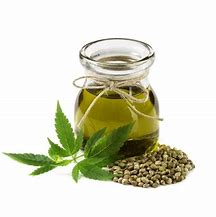Fixed Oils and Skin Penetration



-
Fixed Oils and Skin Penetration
- Atopic dermatitis has been shown to respond positively to dermal application (Lovell 1981, Wright & Burton 1982, Kersher & Korting 1992)-but this is disputed b y Sharpe & Farr) - and other skin conditions, such as psoriasis, may also benefit (Ferrando 1886). There is some evidence that oil is rich in bonded essential fatty acids do bring benefits where the skin is dry.
- The stratum corneum in normal skin is rich in saturated and polyunsaturated fatty acids and a deficiency in these essential fatty acids can result in dryness because of the increase in trans-epidermal water loss. The level of GLA in the epidermis is low because of a lack of the enzyme necessary to convert LA to GLA and in dry skin the level of LA is low.
- It has been observed that topical application of borage and evening primrose oils increases the level of GLA in the stratum corneum up to 2% following application of the oil for fourteen days (Hoffman-la Roche 1989) so helping dry skin problems. The skin was always considered to be completely impermeable (Fleisher 1877) up until the beginning of the 20th century when it was generally accepted that, although relatively impermeable to water, the skin did accept lipid soluble substances including vegetable oils and fats.
- Salfeld (1911 p.171 ) wrote that natural fats are insoluble in water; they serve as protectives to the skin against external injuries, and partially penetrate it, in virtue of which it swells, acquires a gloss, and is protected against dryness.
- He also noted that it may be difficult to introduce a medicament into a greasy scalp, unless it can be got to incorporate itself or mix with the greasy secretion. Hence an ointment or oil containing the drug will penetrate in such circumstances more readily than anything else (Saalfeld 1911 p. 178).
- Today the skin is regarded as a semi permeable barrier to many materials. natural sebum permeates the space between the cells, which themselves have a lipid bilayer thus enabling lipidic molecules to pass the stratum corneum by finding their way around and through the cells. The percutaneous absorption of some vegetable oils was studied in adult albino rats; in this test sweet almond oil was found to have a relatively low percutaneous absorption; it was concluded that increased amounts of short chain and polyubsaturated fatty aids in oils enhances their percutaneous absorp[tion (Valerie & Sobrin 1963)-See fatty acid saturation below.
- Parenteral nutrition
- The observations made in the previous section (namely that carrier oil molecules are too large to be absorbed through the skin) may not always be absolutely true. Consideration given to the use of cutaneously applied vegetable oils as a way of preventing essential fatty acid deficiency in some people who have had surgery which prevents the natural digestive process, provides some sort of evidence regarding the penetration of the skin by fixed oils , or at least some of their components.
- Press, Harop and Prottey (1974) used sun flower seed oil with three patients who had developed essential fatty acid deficiency after major intestinal resections. The deficiency was corrected by the application of 2-3 mg of the oil per kg of body weight per day for twelve weeks . Friedman et al (1976) reported the correction of essential fatty acid deficiency in two infants who were given 1400 mg per day of topically applied sunflower oil.
- The above work does seem to suggest that in order for the essential fatty acid to be made available the triacylglycerol molecules have to undergo a chemical process known as hydrolysis, and this can only take place within the body, thus all or part of the oil must necessarily have passed the skin for this to happen. However, other investigators have reported that essential fatty acid deficiency cannot be influenced by cutaneously applied vegetable oils ( Hunt et al 1978, Mcartney et al 1983. O'Neill, Caldwell & Meng 1976).
- Miller et al (1978, examined the use of safflower oil on five patients, and deduced that topical aspplication may improve plasma acid profiles but adequacy of tissue stores remained unanswered. They noticed that only the deficiency in one of the fatty acids was being addressed (linoleic acid), as saaflower oil does not contain appreciable amounts of linolenic acid. They were cautious about extending the results of the study, and felt that because some of their subjects displayed abnormal results in liver function tests such tests should be carefully monitored in all patients given cutaneous safflower.
- Reference: Carrier Oils For Aromatherapy & Massage: Len Price with Ian Smith & Shirley Price
Articles-Most Read
- Home
- Contact Us
- Coconut Oil-2
- Absorption Ratings for Carrier Oils
- Cold Pressing Method
- What are Essential Fatty Acids
- Cherry Kernel Oil
- Fixed Oils and Skin Penetration
- Hempseed Oil
- Almond Oil
- Cocoa butter
- Camelina Oil
- Coconut Oil
- Antibacterial Effects Of Carrier Oil
- Lime Blossom Oil (macerated)
- Carrot Oil, Wild Carrot Oil (macerated)
- Apricot Kernel Oil
- Kukui Nut Oil
- Jojoba Wax
- Pumkin Seed Oil - Cucurbita maxima, C. pepo
- Passion Flower OIl (Macerated)
- Hydrocotyle Oil (macerated)
- Palm Kernel Oil
- Rapeseed Oil - Carrier Oil
- Nutrients
Who's On Line
We have 131 guests and no members online
Articles-Latest
- How to Make Homemade Olive Oil: A Step-by-Step Guide
- 20 Evidence-Based Aloe Vera Oil Benefits For Skin, Hair & Health
- Peanut oil - Cold pressed - Are There Health Benefits? How To Make
- What Are the Health Benefits of Black Seed Oil?
- Comfrey oil Infused
- Chamomile Flowers Infused Oil
- Calendula Flowers Infused Oil
- Arnica Flowers Infused Oil
- How To Make Herb-Infused Oils
- DIY avocado oil for healthy skin
- How To Make Coconut Oil
- 8 Benefits of Mustard Oil, Plus How to Use It
- SHOREA STENOPTERA SEED BUTTER
- Shea Butter- 7 Amazing Benefits Of Shea Butter
- Monoi Oil For Hair & Skin
- Mango Seed Oil
- Cohune Oil Is The Next Big Thing
- Brazil Nut OIl
- 7 Impressive Benefits Of Allspice
- Camelina Oil Benefits, Uses, and Side Effects




